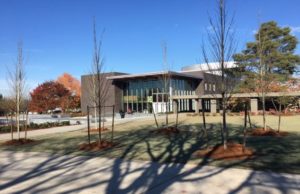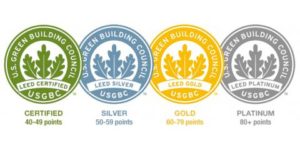
South Seattle College recently completed the construction of their second LEED building (the first LEED building for South Seattle was the Gene Colin C expansion project completed in 2012 at the Georgetown campus). Leadership in Energy and Environmental Design (LEED) is “the most widely used green building rating system in the world” for building design, new and major construction, and operations and maintenance. LEED is the primary program of the U.S. Green Building Council. For new construction, buildings can earn LEED Certified, LEED Silver, LEED Gold, or LEED Platinum. South Seattle College is proud of this accomplishment—joining a group of building owners, managers and project teams that are demonstrating leadership, innovation, environmental stewardship, and social responsibility through LEED Certification. LEED buildings have a track record of lower operating costs, increased asset values, reduced waste, energy, water, and materials use, and better indoor environments.

Cascade Hall, designed by McGranahan Architects and built by Korsmo Construction, earned LEED Gold in spring 2018. Located on South Seattle’s main campus, it consists of 58,000 square feet of classroom and lab space serving 140 students. The total project cost was $32M, or about $552/square foot. In addition to being built to meet the strict 2012 Seattle Building Code, Cascade Hall has the following sustainability features:
Energy
- Site layout and window glazing maximizes natural daylighting, reducing lighting needs and improving occupant comfort, productivity, and health
- Controlled lighting and power receptacles to reduce electricity usage
- 100% of interior and exterior lighting is LED
- 72kW Photovoltaic (PV) system on the roof
- Occupancy sensors and daylight sensors reduce electricity use automatically
- Finned tube convectors at glazing help offset exterior glazing heat losses, reducing natural gas usage in colder months
- High efficiency natural gas units
- Reduced energy consumption costs by 36% compared to baseline buildings
Materials
- Local/regional, recycled content (23%), and green certified materials incorporated into various parts of the building
- Steel, brick, wood, and concrete building materials were selected for their durability, cost effectiveness, low maintenance, and other general sustainability characteristics to reduce long-term environmental and economic impacts
- Diverted more than 95% of construction and demolition waste from the landfill during construction
- Low-emitting materials improve indoor air quality (IAQ)
Water/Site
- 40,000 cubic foot storm detention pipe system reduces storm water surges into a vulnerable municipal system
- Low flow toilets and other water efficiency technology
- Rain gardens were incorporated into landscaping- treating and reducing stormwater on site
- Native and drought resistant plants were incorporated into landscaping to reduce the need for irrigation
- Green roof assemblies
- Capture rain water and reduce stormwater runoff
- reduce heat island effect- reducing electricity for cooling and natural gas for heating (acts as additional insulation)
- Beautiful views of Mt. Rainier on a clear day are also included
For more information about the sustainability features of Cascade Hall, please contact Seattle Colleges’ Sustainability Coordinator, Adam Maurer, adam.maurer@seattlecolleges.edu. For a list of all Seattle Colleges’ LEED buildings, please go to http://sustainability.seattlecolleges.edu/reporting-2/leed-buildings/
